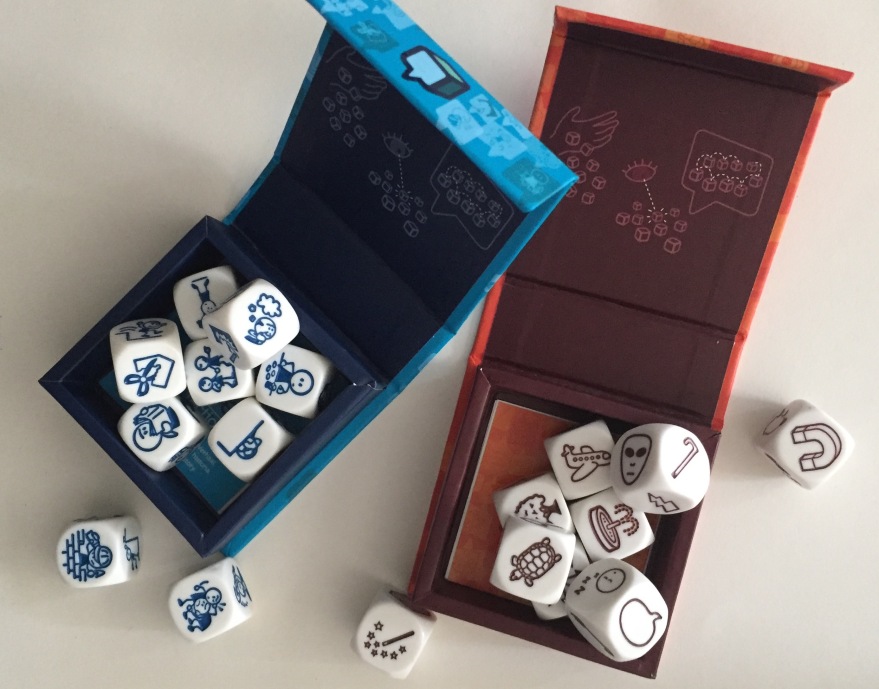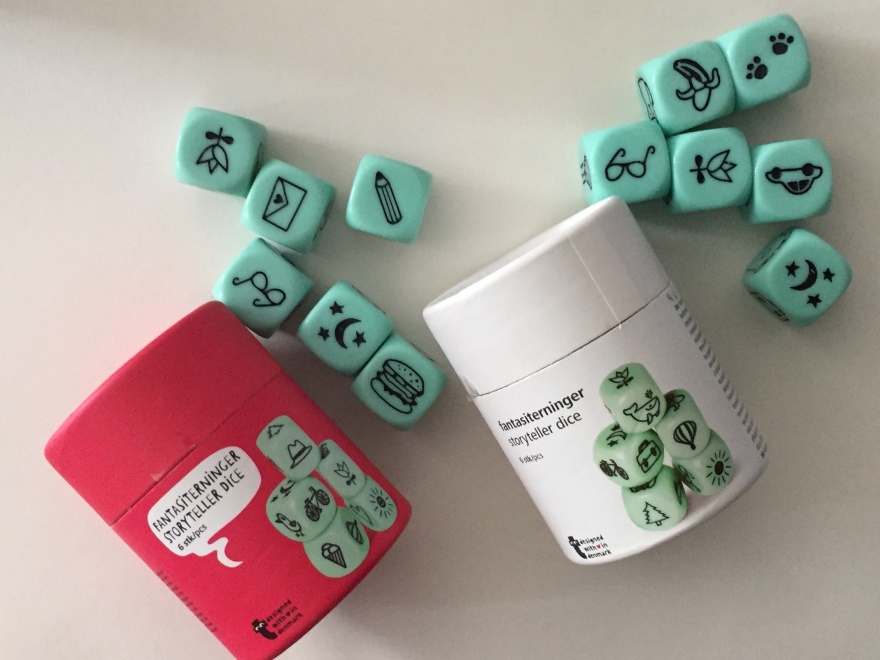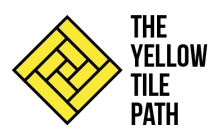What are Story Cubes?
Basically, Rory’s Story Cubes are a set of dice with different icons printed on them. They were originally designed as a problem solving tool for adults, but it developed into an entertaining storytelling game that is used widely all around the world, and it has caught on among the educational community for their endless possibilities.

There are so many! Which cubes do I need?
There are several sets that can be combined to fit a given topic. I recommend mixing the standard set and the Actions box, as they give more flexibility when building sentences. In addition, there are many themed mix sets that could fit the vocabulary topics you are covering in your lesson.
Buying 9 cubes sets may save you some money. Fantasia contains Enchanted, Mythic and Medieval. Mystery comprehends Clues, Fright and Strange and Primal includes Prehistoria, Animalia and Explore.
How many cubes should I use?
Another issue to consider is the number of cubes you are going to use per group. I teach around 30 students per class, and in my experience, using nine cubes can be a bit overwhelming. I found out that three cubes work just fine: one from the standard set, one from Actions and one from the specific topic set your students are working with.

Ok… so how do I use Story Cubes in my classroom?
Every classroom is different, not only in terms of level. Some groups are louder than others, more independent, more creative… The great thing about Story Cubes is that they have endless possibilities. Here I present some ideas that you could adapt to your needs:
- Students could roll a dice to complete a sentence using any given grammar structure. For example, if you want students to practice past simple, they should complete a sentence like “Last Saturday, I…”
- Character profile: students could use the dice to complete details such a superhero’s power, details of a biography, or a specific personality.
- Cubes could be used to review vocabulary: each student says or writes all the vocabulary terms related to a picture.
- Collaborative stories. Each person in the group, taking turns, adds a new sentence to the story.
- Micro-stories: each group of students roll three dice and they have to write a story In three sentences. Here you could force them to use a given grammar structure.
- Write a story with a template, there are so many out there!
- Grammar competition! Each group must write grammatically correct sentences using the pictures in the dice. By setting a point system, you could assign points to given grammar and sentence structures, and take away points for grammar and/or spelling mistakes.
Great! But Story Cubes are pricey…
If Story Cubes are above your budget, you may want to consider using their app, which is really easy to use, sets are cheaper and it looks so cool to project on the screen! Students love it.
Besides, there are similar cubes (and cheaper) in shops like Flying Tiger. (They even have a Halloween themed set!)

Additionally, if you feel crafty you could do them yourself!
Have you ever used Story Cubes in your lessons? How did it go? It would be great to add new ideas!!
Have fun!
